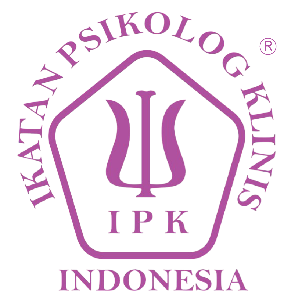MENU
AI Tools Usage Policy
Policy on ChatGPT and Generative AI based on COPE (Committee on Publication Ethics) for Jurnal Psikologi Teori dan Terapan (JPTT).
Use of Large Language Models and Generative AI Tools in Writing Your Submission.
JITCS recognizes the benefits of utilizing large language models (LLMs), such as ChatGPT, and generative AI as productivity tools for authors during the article preparation process. These tools can assist in generating initial ideas, structuring content, summarizing, paraphrasing, and refining language usage. However, it is crucial to acknowledge that all language models have limitations and cannot replicate human creative and critical thinking. Human intervention remains essential to ensure accuracy and appropriateness of the content presented to readers. Therefore, JITCS requires authors to be mindful of the following considerations when using LLMs in their submissions:
-
Objectivity: LLM-generated text may contain previously published content with biases, including racism, sexism, or other biases. Minority viewpoints may not be adequately represented. The use of LLMs has the potential to perpetuate these biases since the information generated is decontextualized and harder to identify.
-
Accuracy: LLMs can produce false content, particularly when used beyond their domain or when addressing complex or ambiguous topics. They might generate linguistically plausible but scientifically implausible content, provide incorrect facts, and even generate nonexistent citations. Some LLMs may also lack access to recent data, resulting in an incomplete picture.
-
Contextual understanding: LLMs struggle to apply human understanding to the context of a given text, especially when dealing with idiomatic expressions, sarcasm, humor, or metaphorical language. This can lead to errors or misinterpretations in the generated content.
-
Training data: LLMs require a substantial amount of high-quality training data to achieve optimal performance. However, in certain domains or languages, such data may not be readily available, limiting the model's usefulness.
Guidance for Authors:
Authors are required to:
-
Clearly indicate the use of language models in their manuscripts, specifying which model was employed and for what purpose. This information should be provided in the methods or acknowledgments section, as appropriate.
Disclosure instructions
Authors must disclose the use of generative AI and AI assisted technologies in the writing process by adding a statement at the end of their manuscript in the core manuscript file, before the References list. The statement should be placed in a new section entitled ‘Declaration of AI and AI assisted technologies in the writing process’.
Statement: During the preparation of this work the author(s) used [NAME TOOL / SERVICE] in order to [REASON]. After using this tool/service, the author(s) reviewed and edited the content as needed and take(s) full responsibility for the content of the publication.
Download the draft "Declaration of AI and AI-Assisted Technologies in the Writing Process" prior to submitting your article [here].
This declaration does not apply to the use of basic tools for checking grammar, spelling, references etc. If there is nothing to disclose, there is no need to add a statement.
-
Verify the accuracy, validity, and appropriateness of the content and citations generated by language models, correcting any errors or inconsistencies that may arise.
-
Provide a list of sources used to generate content and citations, including those generated by language models. Authors should carefully review citations to ensure accuracy and proper referencing.
-
Be aware of the potential for plagiarism when language models reproduce substantial text from other sources. Authors should cross-check the original sources to avoid plagiarizing others' work.
-
Acknowledge the limitations of language models in their manuscripts, including the potential for bias, errors, and knowledge gaps.
Please note that AI bots such as ChatGPT should not be listed as authors in your submission.
Appropriate corrective actions will be taken if published articles are identified with undisclosed use of such tools.
Authors should review the guidelines of the journal they are submitting to for any specific policies regarding these tools.
Editors and Reviewers:
Maintaining the integrity of the editorial and peer review process requires reviewers and editors to uphold strict standards of confidentiality, objectivity, and accuracy at every stage of manuscript evaluation. With the increasing use of artificial intelligence (AI) technologies, including generative AI tools such as ChatGPT and similar systems, it is essential to establish clear ethical boundaries.
For reviewers, any manuscript submitted for peer review is confidential and must not be uploaded, shared, or processed using generative AI tools in any form. Uploading manuscripts or review reports to such tools may compromise author confidentiality, infringe copyright, and breach data privacy regulations. Furthermore, scientific peer review demands critical thinking and expert judgment, which cannot be delegated to AI. Reviewers are therefore prohibited from using generative AI to write, structure, or assist in the preparation of review reports. Reviewers remain fully responsible and accountable for the content and conclusions of their evaluations.
For editors, all manuscripts and related editorial correspondence must be treated as confidential. Editors must not upload manuscripts, decision letters, or any editorial communications into generative AI tools, even for purposes such as language refinement. Editorial decisions, including the acceptance or rejection of a manuscript, must be based on the editor’s own professional evaluation and judgment, not on the output or suggestions generated by AI systems.
The use of AI technologies may be permitted for limited technical functions—such as plagiarism detection or formatting checks—provided that these tools do not access or process the scientific content of manuscripts directly, and that they are operated within secure, official systems that adhere to established data privacy and ethical standards.
If there is reasonable suspicion that a reviewer or author has misused generative AI without proper disclosure, editors should report the matter promptly to the publisher or the journal’s governing body for investigation.
While we acknowledge and support the responsible use of emerging technologies, it is important to emphasize that the scientific assessment of research and editorial decision-making remain fundamentally human responsibilities that must not be delegated to machines.
Further information
Please see the World Association of Medical Editors (WAME) recommendations on chat bots, ChatGPT and scholarly manuscripts and the Committee on Publication Ethics (COPE)’s position statement on Authorship and AI tools
This policy may be subject to further evolution as we collaborate with our publishing partners to understand how emerging technologies can facilitate or hinder the research publication process. Please revisit this page for the latest information.

















